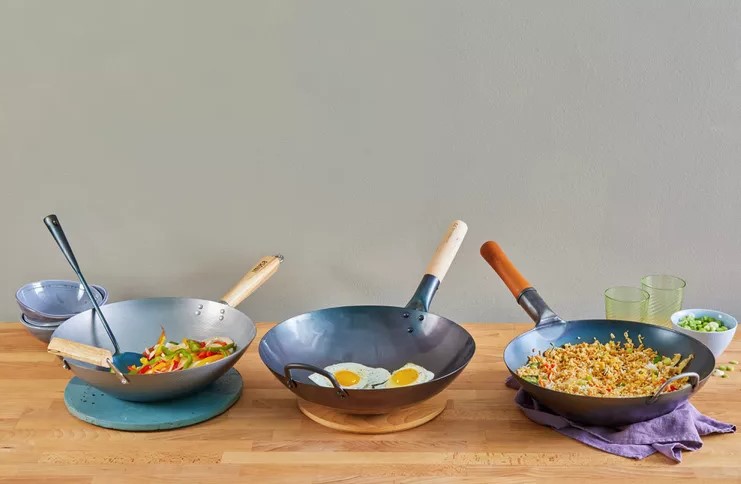Welcome to our ultimate guide to the best works and pressure cookers! In this comprehensive guide, we will discuss everything you need to know about these two essential kitchen appliances. From their history and different types, to how they work and the benefits of using them – we’ve got you covered.
So whether you’re a seasoned chef looking for the perfect wok or a beginner cook interested in the benefits of pressure cooking, this guide is for you.
History of Woks
Works have been an integral part of Asian cuisine for centuries. They originated in China and were traditionally made from cast iron or carbon steel. Over time, works have evolved to include different materials such as stainless steel and aluminum. Each material has its own unique properties and advantages, making it important to choose the right one for your cooking needs.
Types of Woks
There are several types of works available in the market today. The most common ones include:
- Round bottom woks: These are traditional Chinese woks with a round bottom, designed to be used with a wok ring or stand.
- Flat bottom woks: These are more versatile and can be used on any stovetop, making them a popular choice in Western countries.
- Electric works: These are standalone electric appliances that eliminate the need for a stovetop. They are great for small kitchens or outdoor cooking.
How to Use a Wok
Works are incredibly versatile and can be used for stir-frying, deep-frying, steaming, and more. Discover these valuable insights for mastering the art of wok cooking:
- Heat the wok before adding oil or ingredients.
- Use high heat for quick and even cooking.
- Toss food frequently to ensure even cooking.
- Add ingredients in stages based on their required cooking time.
Benefits of Using a Wok
- Faster cooking time: The unique shape of a wok allows for quick and even heat distribution, reducing cooking time.
- Versatility: As mentioned earlier, works can be used for various cooking techniques, making them a versatile addition to any kitchen.
- Healthier cooking: Due to the high heat and quick cooking time, food cooked in a wok retains more nutrients and vitamins compared to traditional methods.
History of Pressure Cookers
Pressure cookers have a much shorter history compared to works. They were invented in the 17th century by French physicist Denis Papin and were initially used for canning food. Over time, pressure cookers have become popular for their ability to cook food faster while retaining its nutritional value.
Types of Pressure Cookers
Pressure cookers come in two primary variants: stovetop and electric.. Stovetop pressure cookers use the heat from a stove while electric pressure cookers have their heating element. Other variations include:
- Size: Pressure cookers come in various sizes, ranging from 2 to 10 quarts, with the most common being 6 quarts.
- Material: Stainless steel and aluminum are the most popular materials for pressure cookers, each with its pros and cons.
How Does a Pressure Cooker Work?
Pressure cookers work by creating a high-pressure environment that increases the boiling point of water. This allows food to cook faster while retaining moisture and nutrients. The high pressure also tenderizes tough cuts of meat, making them more flavorful and easier to chew.
Benefits of Using a Pressure Cooker
- Time-saving: As mentioned earlier, pressure cookers can significantly reduce cooking time compared to traditional methods.
- Energy efficiency: Due to the shorter cooking time, less energy is required to cook food in a pressure cooker.
- Retains nutrients: The high-pressure environment prevents the loss of nutrients, making pressure cooking a healthier option.
Conclusion
This guide helps you understand works and pressure cookers. Both offer unique benefits and are essential in any kitchen. Consider your cooking needs when choosing between types and materials. Happy cooking! Experiment with these amazing kitchen tools to create delicious meals for yourself and your loved ones. Practice makes perfect, so try new recipes and techniques. Here’s to many tasty meals ahead! Enjoy your work and pressure cooker adventures! Cheers!
Frequently Asked Questions
- What sets apart a wok from a frying pan?
Works and frying pans are both useful kitchen tools but they serve different purposes. The round-bottomed shape of a wok allows for more even heat distribution, making it ideal for stir-frying, while a flat frying pan is better suited for tasks like sautéing and searing.
- Can I use a wok on any type of stovetop?
While flat-bottomed woks can be used on any type of stovetop, traditional round-bottomed woks are best suited for gas stoves. If you want to use a round-bottomed wok on an electric stove, you’ll need a ring stand.
- What types of food can I cook in a pressure cooker?
You can cook a wide variety of foods in a pressure cooker, from meats and poultry to vegetables and grains. It’s particularly useful for dishes that usually require long cooking times, like stews and braises.
- How do I know which size pressure cooker to buy?
The size of the pressure cooker you need depends on the number of people you’re cooking for. A 6-quart pressure cooker is usually sufficient for a family of four.
- Is cooking with a pressure cooker healthy?
Yes, cooking with a pressure cooker is healthy as it helps retain the nutrients in the food. The high-pressure environment reduces cooking time and thus preserves more vitamins and minerals compared to other cooking methods.
To read more articles visit Zara Nook


